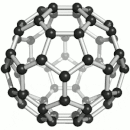Roald Hoffmann
| Roald Hoffmann | |
|---|---|

Roald Hoffmann
|
|
| Born | Roald Safran July 18, 1937 Złoczów, Poland (now Ukraine) |
| Citizenship | United States |
| Nationality | American |
| Fields | Chemistry |
| Institutions | Cornell University |
| Alma mater |
Stuyvesant High School Columbia University Harvard University |
| Doctoral advisor |
|
| Known for | reaction mechanisms |
| Notable awards |
|
| Spouse | Eva Börjesson (m. 1960) |
| Children | Two |
|
Website www |
|
 |
|
|
|
|
|
|
Roald Hoffmann (born Roald Safran; July 18, 1937) is an American theoretical chemist who won the 1981 Nobel Prize in Chemistry. He has also published plays and poetry. He is the Frank H. T. Rhodes Professor of Humane Letters, Emeritus, at Cornell University, in Ithaca, New York.
Hoffmann was born in Złoczów, Poland (now Ukraine), to a Jewish family, and was named in honor of the Norwegian explorer Roald Amundsen. His parents were Clara (Rosen), a teacher, and Hillel Safran, a civil engineer. After Germany invaded Poland and occupied the town, his family was placed in a labor camp where his father, who was familiar with much of the local infrastructure, was a valued prisoner. As the situation grew more dangerous, with prisoners being transferred to liquidation camps, the family bribed guards to allow an escape and arranged with a Ukrainian neighbor named Mykola Dyuk for Hoffmann, his mother, two uncles and an aunt to hide in the attic and a storeroom of the local schoolhouse, where they remained for eighteen months, from January 1943 to June 1944, while Hoffmann was aged 5 to 7.
His father remained at the labor camp, but was able to occasionally visit, until he was tortured and killed by the Germans for his involvement in a plot to arm the camp prisoners. When she received the news, his mother attempted to contain her sorrow by writing down her feelings in a notebook her husband had been using to take notes on a relativity textbook he had been reading. While in hiding his mother kept Hoffmann entertained by teaching him to read and having him memorize geography from textbooks stored in the attic, then quizzing him on it. He referred to the experience as having been enveloped in a cocoon of love.
Most of the rest of the family perished in the Holocaust, though one grandmother and a few others survived. They migrated to the United States on the troop carrier Ernie Pyle in 1949.
Hoffmann married Eva Börjesson in 1960. They have two children, Hillel Jan and Ingrid Helena. Hoffmann visited Zolochiv with his adult son (by then a parent of a five-year-old) in 2006 and found that the attic where he had hidden was still intact, but the storeroom had been incorporated, ironically enough, into a chemistry classroom. In 2009, a monument to Holocaust victims was built in Zolochiv on Hoffmann's initiative. He is an atheist.
...
Wikipedia
